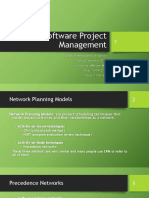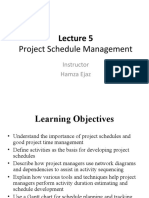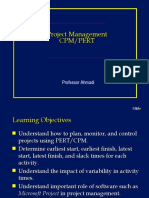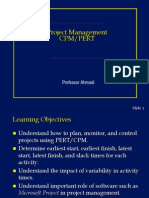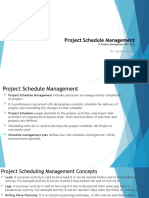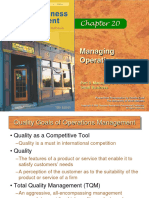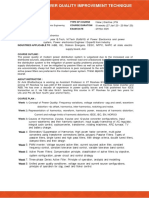0% found this document useful (0 votes)
51 views34 pagesWeek 4
This document discusses project scheduling and the critical path method for project management. It defines key concepts like activities, milestones, precedence networks and activity durations. It explains how to identify activities, estimate durations, and develop an activity network diagram showing the logical relationships and dependencies between tasks. The document also covers calculating earliest and latest start/finish dates using forward and backward passes, and identifying the critical path which determines the earliest project completion date. Activities on the critical path have zero float and any delay will delay the entire project.
Uploaded by
Abhishek sulliaCopyright
© © All Rights Reserved
We take content rights seriously. If you suspect this is your content, claim it here.
Available Formats
Download as PDF, TXT or read online on Scribd
0% found this document useful (0 votes)
51 views34 pagesWeek 4
This document discusses project scheduling and the critical path method for project management. It defines key concepts like activities, milestones, precedence networks and activity durations. It explains how to identify activities, estimate durations, and develop an activity network diagram showing the logical relationships and dependencies between tasks. The document also covers calculating earliest and latest start/finish dates using forward and backward passes, and identifying the critical path which determines the earliest project completion date. Activities on the critical path have zero float and any delay will delay the entire project.
Uploaded by
Abhishek sulliaCopyright
© © All Rights Reserved
We take content rights seriously. If you suspect this is your content, claim it here.
Available Formats
Download as PDF, TXT or read online on Scribd
/ 34
